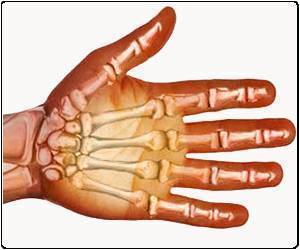Grip strength of children may help predict unhealthy outcomes and future risks for developing diabetes, heart disease, disability and even early mortality.

‘Grip strength of children may help predict unhealthy outcomes and future risks for developing diabetes, cardiovascular disease, disability and even early death. Measuring hand grip can help identify youths who could benefit from lifestyle changes.’





"What we know about today's kids is that because of the prevalence of obesity, they are more at risk for developing pre-diabetes and cardiovascular disease than previous generations," said senior author Paul M. Gordon, Ph.D., professor and chair of health, human performance and recreation in Baylor's Robbins College of Health and Human Sciences."This study gives multiple snapshots over time that provide more insight about grip strength and future risks for developing diabetes and cardiovascular disease," he said. "Low grip strength could be used to predict cardiometabolic risk and to identify adolescents who would benefit from lifestyle changes to improve muscular fitness."
The study -- "Grip Strength is Associated with Longitudinal Health Maintenance and Improvement in Adolescents" -- is published in the Journal of Pediatrics. It was conducted by researchers at Baylor University, the University of Michigan and the University of New England.
Students tracked in the study were assessed in the fall of their fourth-grade year and at the end of the fifth grade. Using the norms for grip strengths in boys and girls, researchers measured the students' grips in their dominant and non-dominant hands with an instrument called a handgrip dynamometer.
Researchers found that initially, 27.9 percent of the boys and 20.1 percent of the girls were classified as weak. Over the course of the study, boys and girls with weak grips were more than three times as likely to decline in health or maintain poor health as those who were strong.
Advertisement
"Even after taking into account other factors like cardiorespiratory fitness, physical activity, and lean body mass, we continue to see an independent association between grip strength and both cardiometabolic health maintenance and health improvements," Gordon said.
Advertisement
If someone with a strong grip develops an even stronger grip, "we don't necessarily see a drastic improvement in that individual's health," Gordon noted. "It's the low strength that puts you at risk.
"Given that grip strength is a simple indicator for all-cause death, cardiovascular death and cardiovascular disease in adults, future research is certainly warranted to better understand how weakness during childhood tracks into and throughout adulthood," he said. "Testing grip strength is simple, non-invasive and can easily be done in a health care professional's office. It has value for adults and children."
*An estimated 17.2 percent of U.S. children and adolescents aged 2 to 19 years are obese and another 16.2 percent are overweight, according to the National Center for Health Statistics. Excess weight carries a greater lifetime risk of diabetes and premature heart disease. While the World Health Organization and the U.S. Department of Health and Human Services recommend that youths perform at least 60 minutes of moderate to vigorous physical activity daily -- including vigorous activity at least three days a week -- fewer than a quarter of U.S. children do so, according to a report by the nonprofit National Physical Activity Plan Alliance.
Source-Eurekalert










